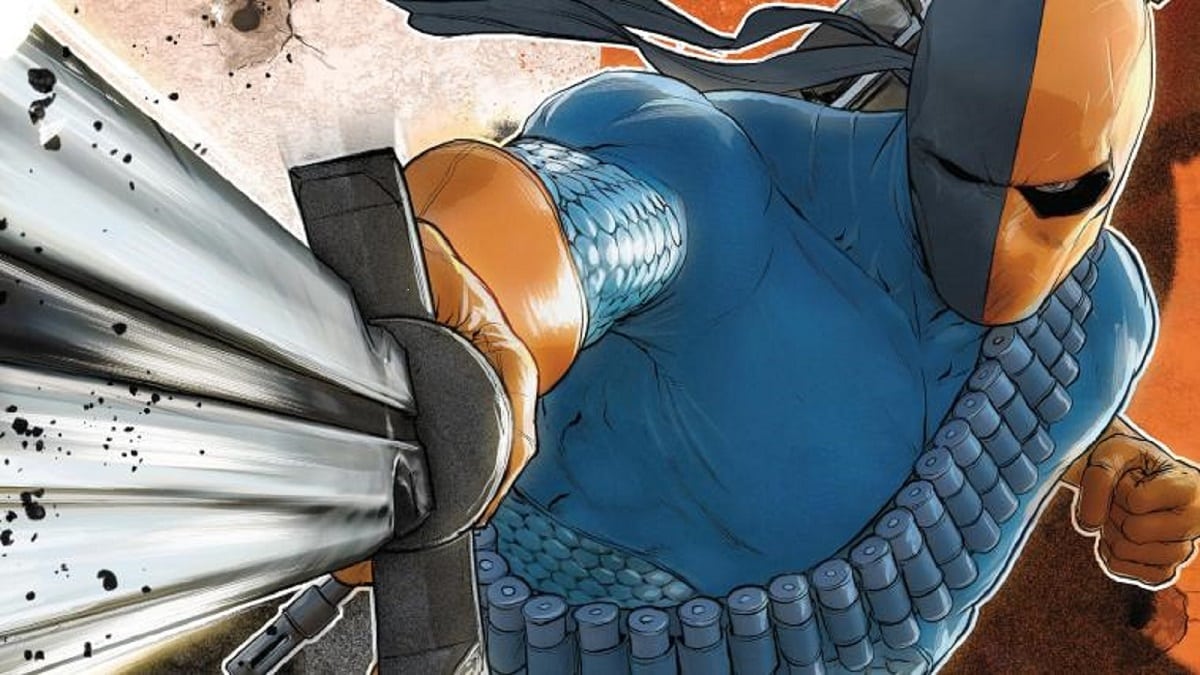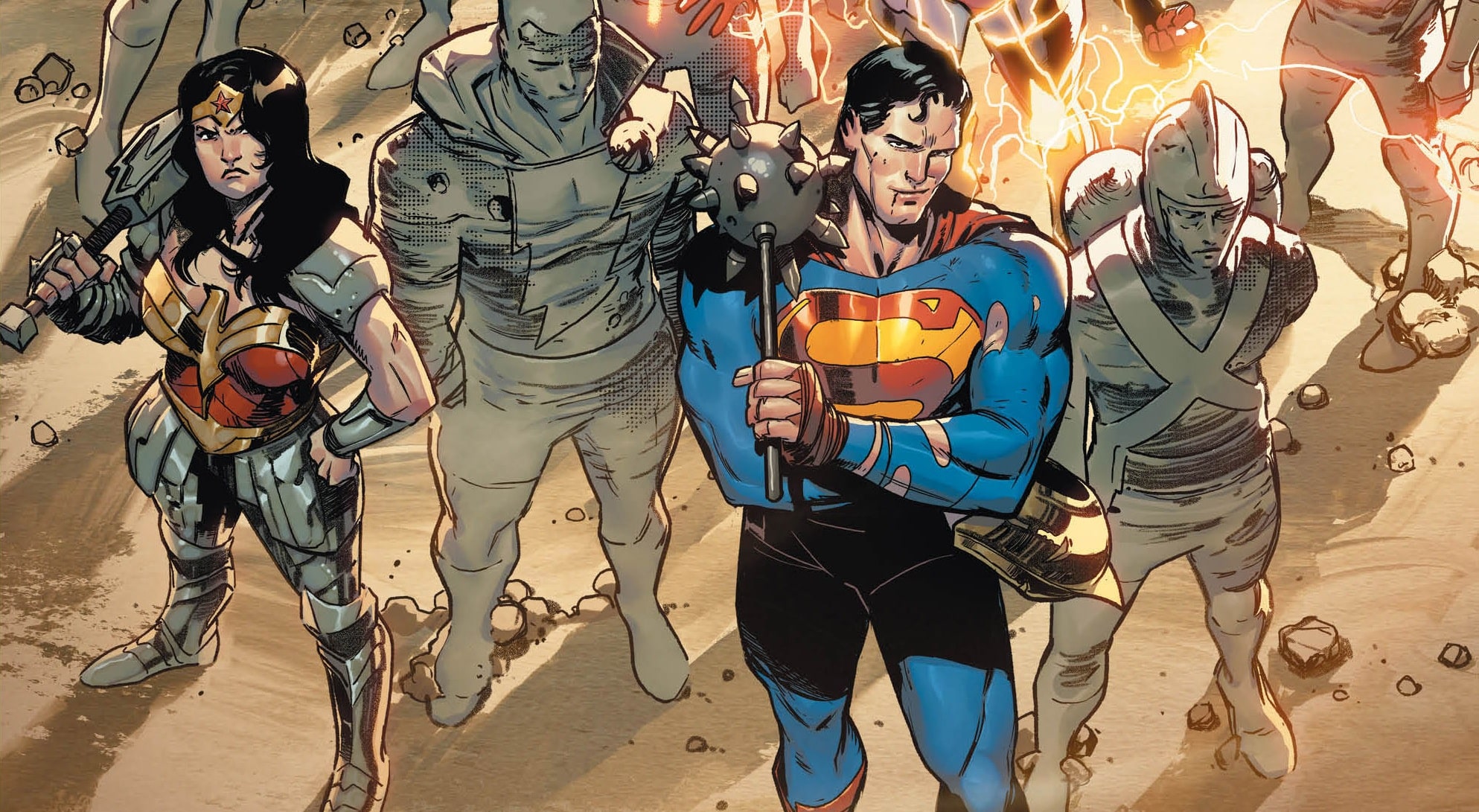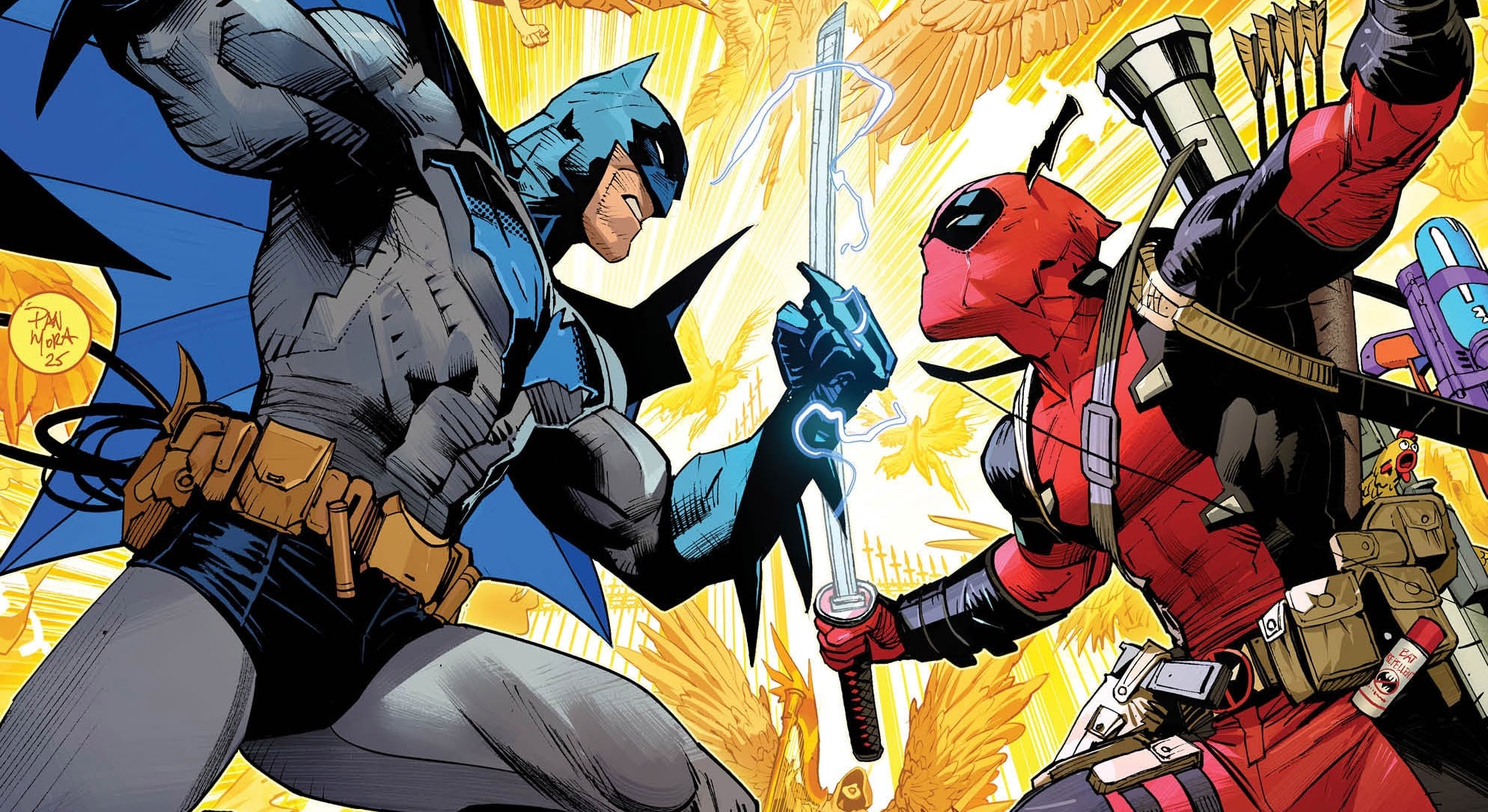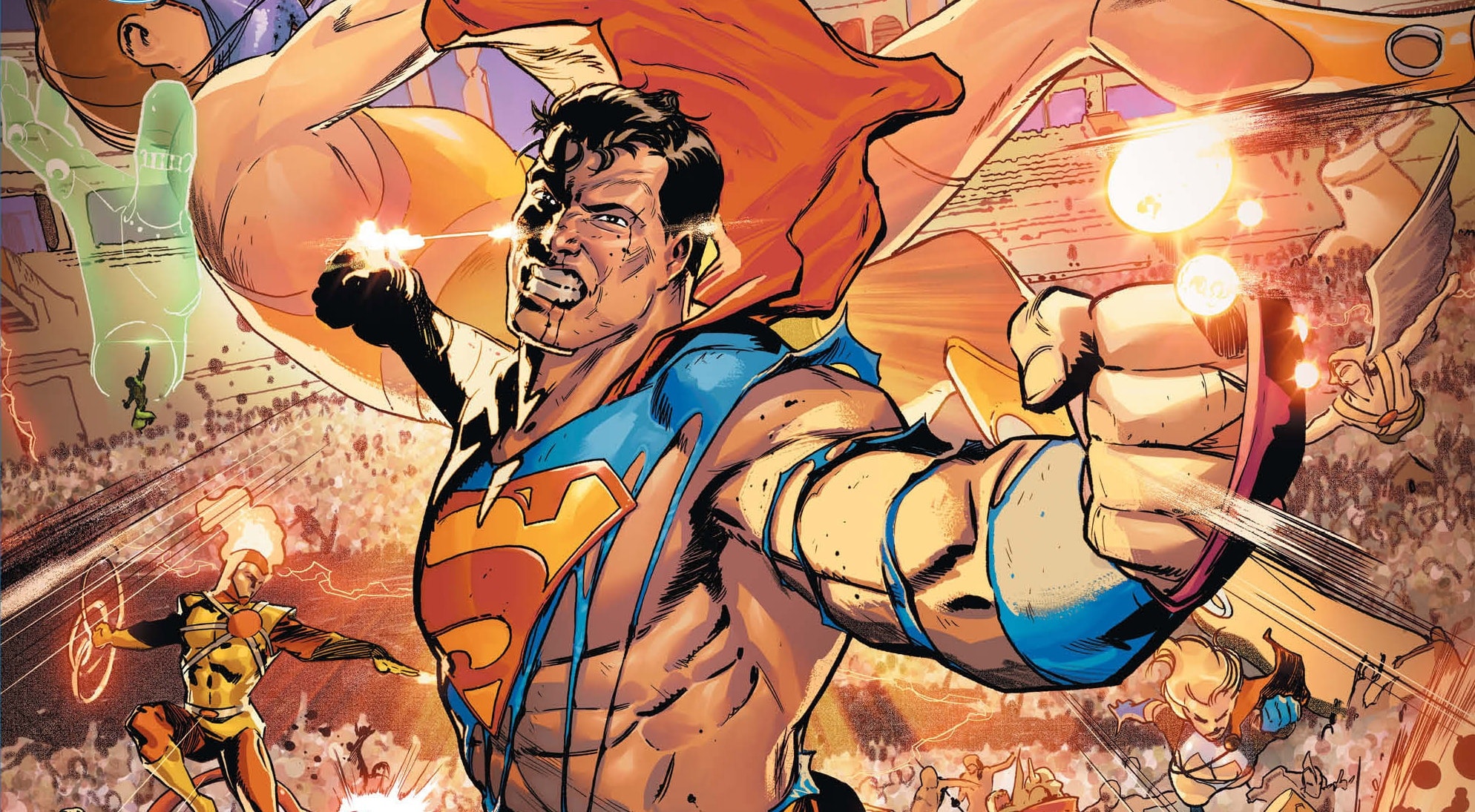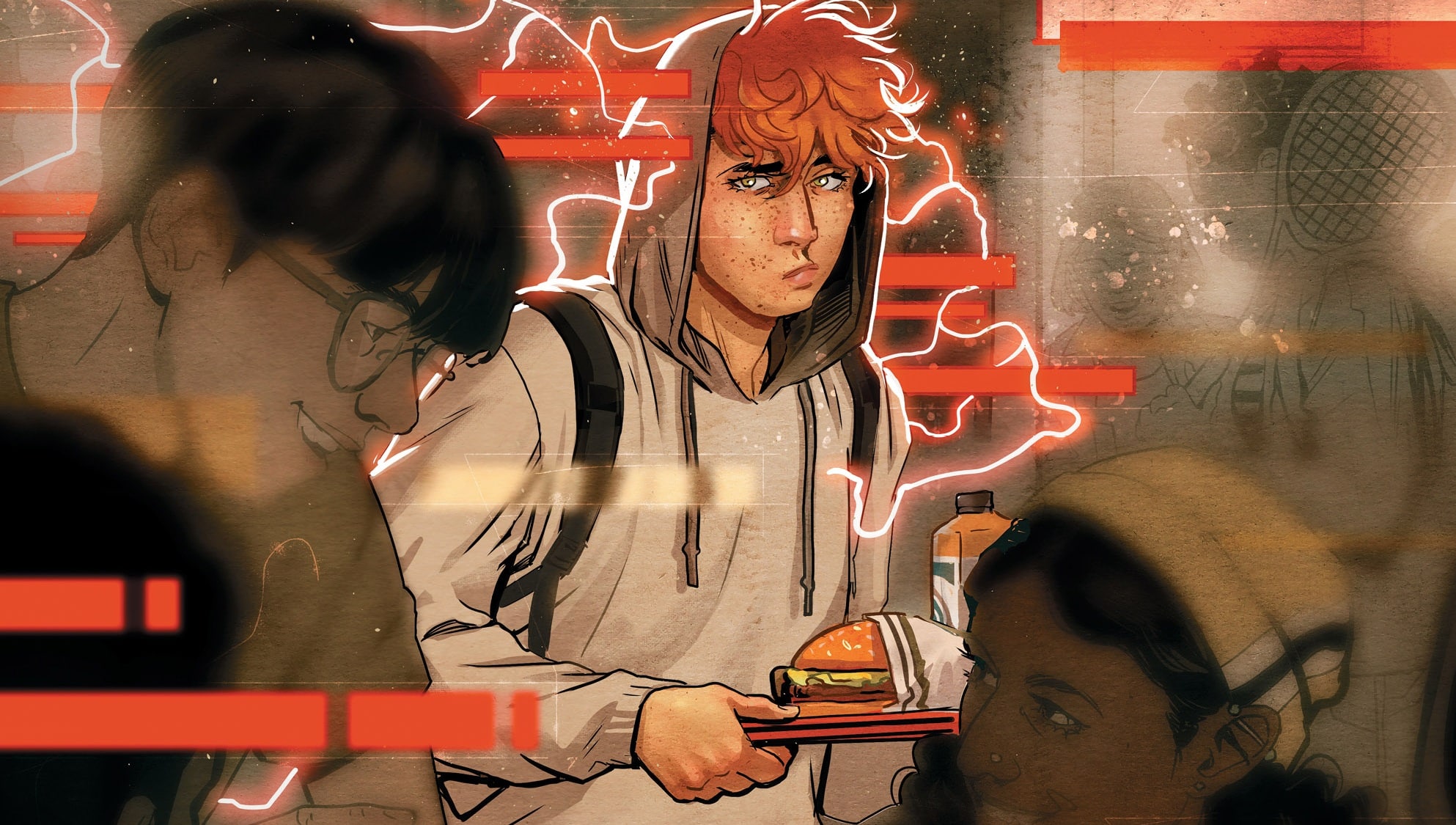‘Year One’ is an interesting title.
Few things seem to carry the inherent prestige in their very evocation as ‘Year One’. Even decades later, we think of the high-bar and sheer power of David Mazuchelli, Richmond Lewis, and Frank Miller’s classic. And in so doing here in Deathstroke Inc. #10, we’re reminded of the possibilities of that title. It suggests a return to the beginning, a space to take stock and really re-construct an idea for the present moment.
‘Year One’ is a consolidation and a new construction to both honor what has been and forge what might be. For all that it is bound up in the framings of ‘the past’ and ‘the origin’, the actual explorations of core ideas, the reframings and recontextualizations all echo forward to transform. Whether it be Catwoman or Gordon, all of them have been re-built under the shadow cast by Year One.
And despite the usage of the title on less-than-stellar books over the years, the title still bears an impressive power. It still means something in a way many others do not. It generates interest.
Which brings us to Deathstroke: Year One, the new arc being kicked off here in Deathstroke Inc. #10 by the brand new creative team of Ed Brisson, Dexter Soy, Veronica Gandini and Steve Wands.
We return to Slade Wilson’s roots here, in what seems to be an attempted evergreen consolidation for the character meant to last, collected and sold as an entry for audiences. It makes sense, given the ever-growing ubiquity and popularity of Deathstroke across multi-media. He’s perhaps DC’s most popular villain who isn’t the Joker, and yet also lends himself very well to exploration in an extended solo capacity. So it makes sense to assemble together a modern origin book to hand to people and get them started, rather than perhaps dumping multiple volumes of Christopher Priest’s run on them.
And what’s curious is that ‘Year One’ has largely been reserved for heroic figures. Deathstroke is a pure monstrous villain, so the prospect of him getting a Year One is one that presents certain possibilities. Especially given Deathstroke in a lot of ways is an Anti-Batman figure, a horrible broken reflection of that super-patriarch on an undying mission. So to title an arc of Deathstroke ‘Year One’, evoking the iconic Batman classic? It’s certainly a statement, at the very least. It makes one wanna see how this reflects or rejects the influence of the 80’s classic. But perhaps beyond all that, Year One also signifies something else. A level of trust and faith, a certain kind of backing from the Publisher–a measure of confidence in what it is putting out.
So going into the book carries some inevitable expectations. Immediately what sticks out is just how much Christopher Priest defined and marked the territory in which Deathstroke inhabits and exists now. From the very moment you see ‘Isherwood’ (a Priest original creation) in the early pages, it’s very clear how much Priest’s contributions and vision for the character and his world are still here. This is very much a Post-Priest take on the material.
And it is…decent enough. Certainly, the book plays him as a bastard and a monster, a cold figure to be studied rather than empathized with. But it lacks the gravitas and wit of someone like Priest behind it, as well as the structural awareness and brilliance. It lacks the distinctive and stylish flair you’d hope for, as for the most part it feels by-the-numbers and standard. It doesn’t really recontextualize or reveal much that is new when revisiting the past. There’s the sense of nodding along, while waiting for something juicy or exciting that doesn’t really come up. It’s not bad, it’s merely just adequate. And that is a shame.
Soy and Gandini’s long collaboration continues once again here, and he brings his ‘rough’ style that defined the visual aesthetics of titles like Red Hood and The Outlaws. He draws Slade in all his ruthless power and detachment. Slade feels like a person whose skin you could touch and feel all the scratches on them. Slade’s only just gotten discharged from his Super-Soldier program, is unable to adjust to civilian life, and things slowly, but surely, begin to go wrong. We have a man that looks like a celebrity but behaves like a predator animal.
It’s all pretty expected, as the arc is locked in very predictable Origin-itis, and it’s not helped by the fact that it doesn’t really bother trying to be interesting or bold with its structure or presentation. For instance, Captions are used extensively to really carry the storytelling, as one might expect from a Year One, but they feel like an easy short-hand to ‘get the job done’ rather than think through decisions like that. There’s very little that feels meaningfully fresh or new in Deathstroke Inc. #10, as things mosty lean to the obvious. Having said that, this is only the first issue, and there is room to grow and improve. Can Ed Brisson and his collaborators join Priest and his partners in being the rare exceptions in making Deathstroke work in modern comics?
Only time will tell.
Ritesh Babu is a comics history nut who spends far too much time writing about weird stuff and cosmic nonsense.

